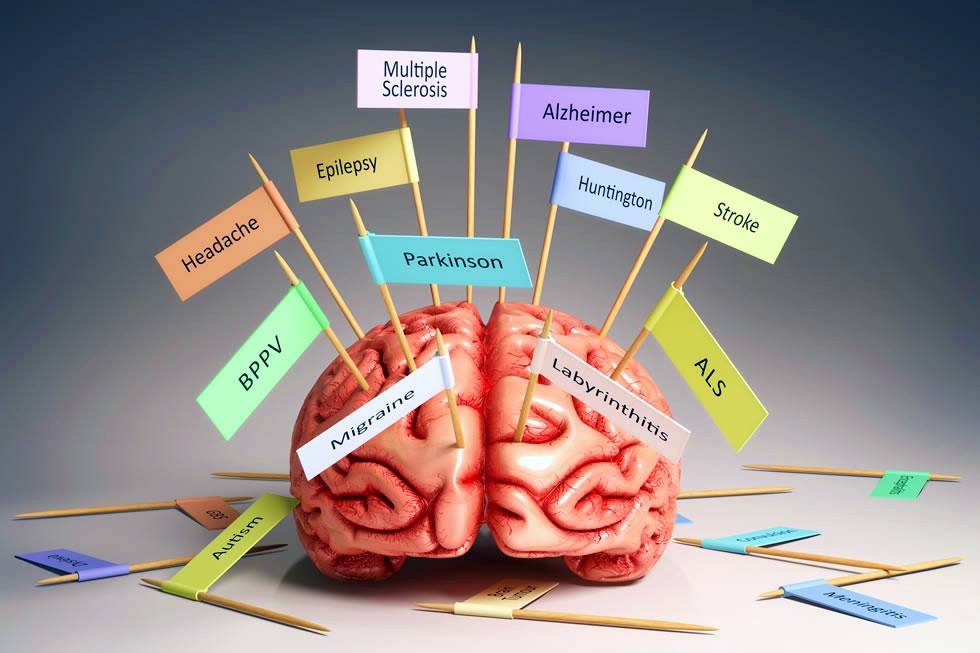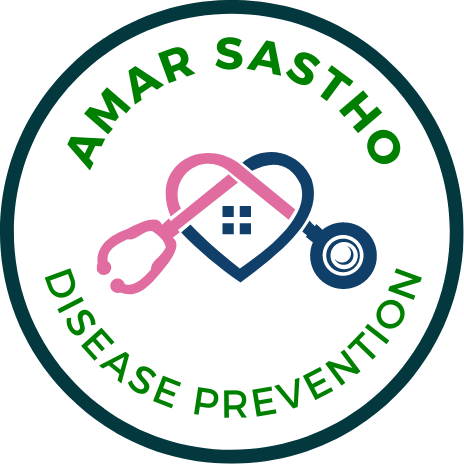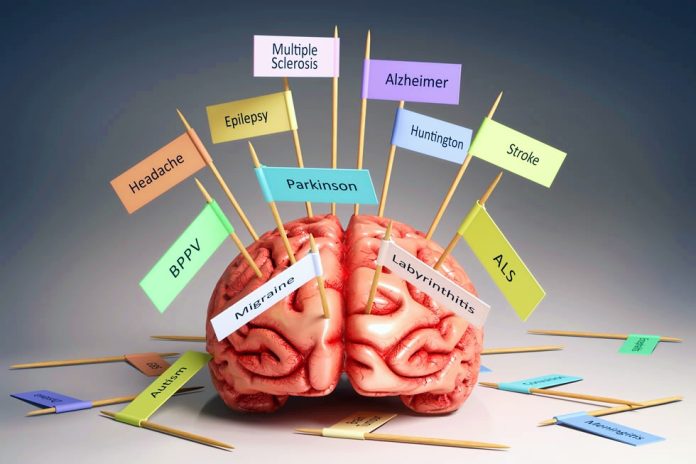Stroke (Stroke) is a deadly disease which has become a major concern among people nowadays. According to the data of the World Health Organization (WHO-World Health Organization), more than 1.5 million people are affected by stroke every year around the world, and about 50 million of them die immediately. (WHO, n.d.) In addition, more than 50 million people become permanently disabled, but in the remaining cases, it is possible to live a healthy life again with timely treatment.
In order to recover from a stroke, it is important to have knowledge about the symptoms and treatment of a stroke, in the same way, to avoid a stroke, it is necessary to know the causes and prevention of a stroke. And so this article discusses all the essentials related to stroke including causes, symptoms, treatment and prevention of stroke.
স্ট্রোক (stroke) কি?
Stroke is a complex disease of cerebral blood flow. Like other cells in the body, the brain needs constant blood flow to deliver oxygen and nutrients to the brain cells. For some reason, if the blood flow to the brain is interrupted due to blood clots in the blood vessels of the brain or due to the rupture of blood vessels, it is called a stroke or Cerebrovascular Accident (CVA) in medical terms. A stroke is an emergency that happens suddenly.
As a result of stroke, the cells in the part of the brain where the blood flow is disturbed lose vitality and slowly the cells start dying. In such a situation, the organs of the body controlled by the cells of the brain lose their function and become disabled. Note that all the organs of the human body are controlled and managed by the brain.
Many people misunderstand the difference between a heart attack and a stroke. Basically, heart attack is a disease caused by abnormalities in the blood flow of the heart and stroke is an abnormality in the blood flow of the brain. Remember that a heart never has a stroke.
কি কারণে স্ট্রোক হয়?
According to the World Health Organization (WHO), one of the main causes of stroke is high blood pressure and smoking habits. (WHO, n.d.) Other factors that have been attributed to stroke include:
- Living an uncontrolled and lazy life
- Consumption of foods high in salt and fat (especially saturated fat and trans fat)
- Drinking habit which mainly increases blood pressure and blood cholesterol level
- In the case of women, taking oral contraceptive pills for a long time, etc.
Read this paragraph to find out which foods contain saturated fat and trans fat.
স্ট্রোক এর রিস্ক ফেক্টর গুলো কি কি?
Risk factors of stroke are as follows:
- Overweight or obesity (Obesity)
- Age above 55 years
- Family history of stroke
- Diabetes
- Heart problems (cardiovascular diseases)
- Sleep problems etc
Both women and men are at risk of stroke. However, according to the US Centers for Disease Control and Prevention, women are more likely to suffer a stroke and die from a stroke.(Holland, 2021)
According to the World Health Organization (WHO), the risk of stroke is lower in developed countries. This is because of health knowledge and awareness among all and also taking proper medical measures to control high blood pressure. (WHO, n.d.) On the other hand, in developing countries like ours, there is still a lack of sufficient health awareness among the general public, as well as apathy towards hypertension control, which increases the risk of stroke.
How many types of stroke are there? (Types of Strokes)
There are basically three types of stroke according to the type of blood flow abnormality in the brain. For example:
Transient ischemic attack (TIA)< /h3>This is called a mini stroke. Because in this case, due to temporary blood clots in the blood vessels of the brain, blood flow is interrupted in some parts of the brain. However, without any treatment, the blood flow returns to normal in a short time and there are no permanent complications.
Complications are not seen in this stroke of mild nature but it cannot be neglected. Because research has shown that patients suffering from a mild stroke have a high chance of suffering from a major stroke later on. Therefore, it is important to take appropriate treatment and lead a regular life by consulting a doctor.(Wedro, 2021)
Ischemic stroke
This is one of the most common types of strokes that occur in complex nature. In this case, the blood vessels of the brain are narrowed or due to permanent blood clots in the blood vessels, the blood flow to the brain cells is interrupted. When blood flow is interrupted, brain cells die due to lack of oxygen and nutrients, resulting in paralysis or physical disability. It can even cause death in some cases.
Hemorrhagic stroke
This is also a stroke of complicated nature but it occurs in very rare cases. In this case, brain cells are damaged due to excess blood flow due to rupture of brain blood vessels.
The three types of stroke mentioned above have similar symptoms but differ in complications. In other words, in the case of Ischemic and Hemorrhagic stroke, although complications arise later, Transient ischemic attack is not so deadly.

স্ট্রোক এর লক্ষণ (Symptoms of stroke)
The human brain has two parts, the right part controls the left side of the body and the left part controls the right side of the body. That is, in the cells of the part of the brain where blood flow is interrupted, abnormalities are observed in the organs on the opposite side. However, generally some other symptoms can be seen. Like-
- Nausea or vomiting
- seizures
- Sudden severe headache
- Paralysis of arms and legs
- Trouble speaking
- Sudden blurred vision
- Difficulty walking (Trouble walking)
- Body imbalance
- fainting etc
The above symptoms include some common symptoms (eg: vomiting, headache, convulsions, fainting, etc.) that can occur in other diseases besides stroke. But in the case of stroke, since the patient needs to be taken to the hospital on an urgent basis, it is important to know exactly what symptoms to understand that a stroke has occurred.
স্ট্রোক রোগ নির্ণয়
There is a special instruction on how to get treatment on an emergency basis after diagnosing a stroke by looking at the symptoms. For ease of remembering it is called FAST where FAST stands for the following. (Wedro, 2021)
- F-face dropping or face bending
- A-arms weakness
- S- Speech difficulty or Speech difficulty
- T-Time to call 999 (Emergency Ambulance Service)
The patient should be taken to the hospital as soon as the above three symptoms appear. Because the sooner the patient can be taken to the hospital for treatment after a stroke, the lower the risk of death will be. And if the treatment is done quickly, the chances of the patient to recover and return to normal life increase.
The national emergency service number of Bangladesh is 999 where emergency medical services and ambulances are available by calling. In addition to medical care, emergency police services and fire service units are also provided. Note that calls to 999 can be made for free through any mobile operator.
স্ট্রোক কিভাবে ডায়াগনোসিস করা যায়?

Diagnosing a stroke based on symptoms alone can help make decisions about hospitalization. But some medical tests are needed to know what kind of treatment will be effective and what complications may occur after the stroke. At this stage, the question may arise in the minds of many that what is the test for stroke? Below are the tests that are used to diagnose the type of stroke:
-Blood Tests: After collecting blood as a sample, blood sugar levels, cholesterol levels, and the number of blood cells called platelets (which help blood clot) are tested in the laboratory.
-CT scan (CT scan): This test is done to monitor the condition of the brain. This test can detect the presence of a tumor or blood clot in the brain.
-MRI: If it is not possible to monitor the condition of the brain properly through CT scan, MRI is indicated. Although this is an expensive test method, it gives a clear idea of how much of the brain cells are damaged.
-Other: Some cases may require further testing. For example: Carotid ultrasound, Cerebral angiogram, Echocardiogram etc.
স্ট্রোক এর চিকিৎসা (Treatment of stroke)
Treatments vary according to the type of stroke. Transient ischemic attack (TIA) usually does not require any emergency treatment. However, if the patient does not recover immediately, he should be taken to the hospital for treatment. In this case, some drugs are prescribed to break up the blood clots in the blood vessels of the brain and restart the blood flow. For example:
- Tissue plasminogen activator (tPA)
- Alteplase IV r-tPA
These drugs indicated for breaking TIA blood clots can also play an effective role in ischemic stroke. However, since Ischemic stroke is a more complex problem than TIA and therefore some more treatment methods are required in this case which are briefly discussed below.
Mechanical thrombectomy: In this method, specially clotted blood is brought out by inserting a catheter into a large blood vessel of the brain. The greatest success is achieved by receiving this treatment within 6 to 24 hours after the stroke.
Surgery: Surgery may be necessary in cases where blood clots in the blood vessels of the brain are removed.
Hemorrhagic stroke treatment varies. Because in this case the blood flow increases due to rupture of the blood vessel and damages the brain cells. And then treatment is done to repair blood vessels and reduce blood flow. For example:
Drugs: During hemorrhagic stroke, drugs that help blood clot and reduce blood flow are prescribed. For example:
- Anticonvulsants
- Antihypertensive agents
- Osmotic diuretics
Others: In addition to medicine, there are various medical procedures including surgery, coiling, clamping, which are adopted by a neurosurgeon or vascular surgeon according to the patient's condition. .
If you suffer from a stroke, you should go to the emergency department of the nearest hospital. Later for better treatment there is “National Institute of Neurosciences and Hospital“ which is located in Agargaon, Dhaka.
স্ট্রোক এর ওষুধ (Medications of stroke)
In addition to the drugs mentioned above, there are some other drugs that are prescribed for the treatment of stroke as well as play a special role in prevention of stroke. (Holland, 2021) eg:
Direct-acting oral anticoagulants (DOACs): Used to treat and prevent hemorrhagic stroke. It is a fast-acting drug that helps reduce excess blood flow to the brain.
Tissue plasminogen activator (tPA): If this drug is applied in the attack of transient ischemic attack or ischemic stroke, it helps to break up blood clots. Administering this medicine by direct injection into a blood vessel makes it work faster.
Anticoagulants: If this medicine is applied in case of ischemic stroke or TIA, it does not allow blood to clot. And so this drug is also indicated to reduce the risk of re-stroke after a stroke.
Antiplatelet drugs: Drugs included in this group are aspirin and clopidogrel which reduce the risk of ischemic stroke and TIA by taking them regularly as per the doctor's instructions.
Statins: The presence of excess cholesterol (LDL-low density lipoprotein) in the blood causes the narrowing of the blood vessels by accumulating in the lining of the blood vessels. As a result of which the blood flow is interrupted and it can eventually cause a stroke. Statins are drugs that help control blood cholesterol. Some of the medicines included in this group are:
- rosuvastatin (Crestor)
- simvastatin (Zocor)
- atorvastatin (Lipitor)

What are the complications of stroke?
Stroke can cause various complications. (Mayoclinic, 2021) eg:
Paralysis (Paralysis): Paralysis can occur on one or both sides of the body. Paralysis renders people disabled and useless which becomes a burden on the family.
Difficulty speaking or eating: If the nerve cells in the brain that control the muscles of the mouth are damaged, the patient cannot speak clearly. Along with that, problems are also seen in taking food.
Memory power decreases: A person suffering from a stroke cannot remember anything. Also the ability to think is lost.
Emotion or depression: Uncontrollable emotions (eg: short tempers or crying etc.) and suffering from depression.
What is the path to recovery after a stroke?
In the event of a stroke attack, if proper medical measures are not taken, the complications mentioned above may arise. However, there is a possibility of recovery if proper measures are taken. According to the information of the American stroke association (American stroke association), 10 percent of patients have the possibility of complete recovery. And so you have to try to recover even after suffering a stroke. In this case, the matters to be done are given below:
Physical therapy: It can play an effective role in removing physical disabilities. In this case, this service can be taken at the clinic or at home with the help of a physical therapist.
Speech therapy: Patients who have difficulty speaking after a stroke need this therapy. Following this therapy, the patient is able to speak again. Otherwise some way of communicating other than speaking (ie: communicating by gesturing) is taught.
Cognitive therapy: By taking this type of therapy, the memory power is stimulated and the ability to think is developed.
Relearning sensory skills: As a result of stroke, the sensitivity of the body decreases. Not able to respond especially to external heat, pressure and pain. In this case, an attempt is made to adapt to the environment through this special training.
There are some rural superstitions in the treatment of paralysis after stroke in our country. It is often seen that attempts are made to cure the patient by resorting to various unscientific methods of treatment (eg: Kabiraji, Ojhar mantra reading etc.). In this case, instead of getting better, the patient gets more complicated. And therefore such unscientific and superstitious treatment methods cannot be accepted. Instead, according to the doctor's advice, modern and scientific treatment methods should be adopted.
How to prevent stroke?

Treatment of stroke is very complex and expensive but not all patients recover completely after stroke. Because stroke is not a completely curable disease. And so how to prevent stroke is briefly discussed below.(Mayoclinic, 2021)
Control of high blood pressure: The most important thing to prevent stroke is keeping high blood pressure under control. Just as uncontrolled high blood pressure can lead to stroke, the risk of stroke can be greatly reduced by controlling high blood pressure.
Read this article to know how to control high blood pressure at home.
Cholesterol control: Consumption of saturated fat and trans fat increases the level of bad cholesterol (LDL-low density lipoprotein) in the blood. And so saturated fat and trans fat should be avoided.
Diet: Eat less meat, fat and simple carbohydrates and eat more fiber. It is important to avoid processed food, fast food etc. and develop the habit of eating fruits and vegetables.
Smoking and drinking: Smoking and drinking habits increase the risk of heart disease and stroke. And so the habit of smoking and drinking must be abandoned.
Weight Control: Just as weight control is essential to staying healthy, weight control through The risk of high blood pressure and stroke is reduced. And therefore excess weight should be reduced through diet control and regular living.
Diabetes control: In addition to weight control to reduce the risk of stroke, blood sugar levels and Keeping diabetes under control is important. Diabetes should be controlled by taking regular diabetes medication, proper diet and exercise.
Exercise: According to the guidelines of the US National Centers for Disease Control and Prevention, an adult should exercise at least 2 hours and 30 minutes a week. That is, exercise for 20 to 25 minutes every day.(Holland, 2021)
Sleep: Sleep is essential for good health and getting enough sleep can reduce the risk of high blood pressure and stroke.
Read this article to know how to overcome sleep problems and ensure adequate sleep.
Health check-ups: Be aware of the body condition by checking the blood pressure regularly and also by consulting a doctor for necessary tests.
Stroke is a life-threatening disease, but early death and post-stroke complications can be reduced if the patient is taken to the hospital and treated promptly. Also, there are effective ways to prevent stroke that are discussed in this article. World Stroke Day is observed worldwide on October 29 every year to raise awareness of stroke risk and stroke prevention. At a personal level it is important for all of us to have proper knowledge and awareness about stroke.
Holland, K. (2021, November 9). Everything You Need to Know About Stroke. Retrieved from Healthline: https://www.healthline.com/health/stroke#risk-factors
Mayoclinic. (2021, February 9). Stroke. Retrieved from Mayoclinic: https://www.mayoclinic.org/diseases-conditions/stroke/symptoms-causes/syc-20350113
Wedro, B. (2021, December 11). Stroke. Retrieved from medicinenet: https://www.medicinenet.com/stroke_symptoms_and_treatment/article.htm
WHO. (n.d.). Stroke, Cerebrovascular accident. Retrieved from World Health Organization: http://www.emro.who.int/health-topics/stroke-cerebrovascular-accident/index.html
Last Updated on July 25, 2022
Was this article helpful?
YesNo


